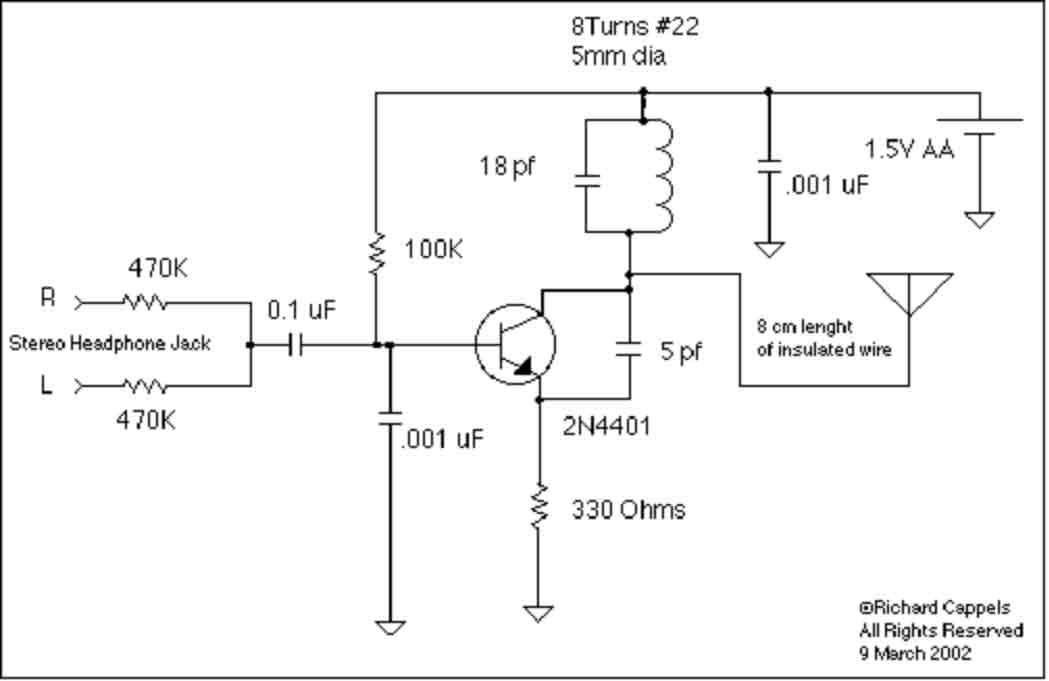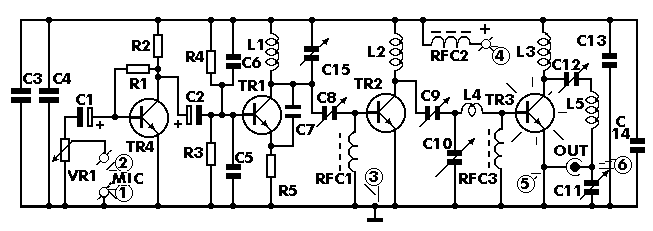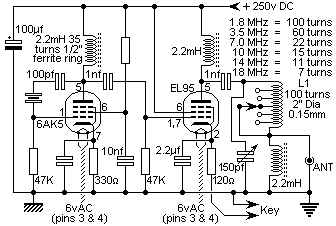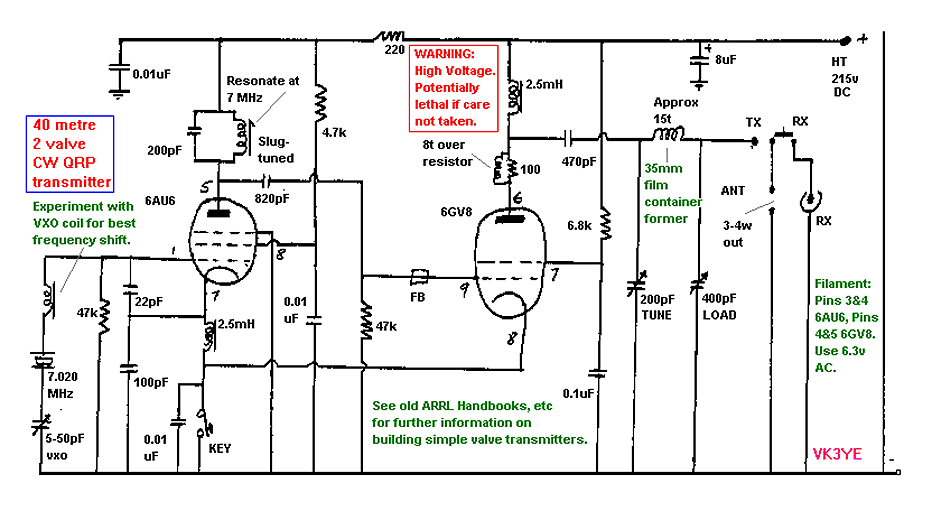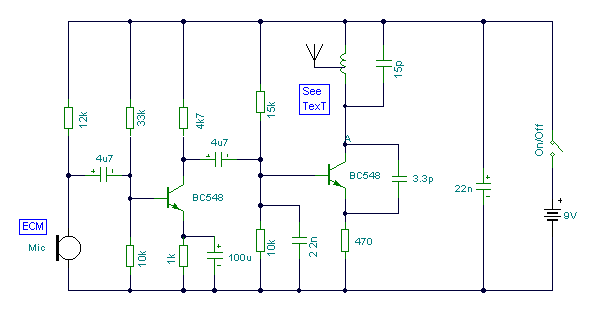
50-300mW FM Transmitter With TX300
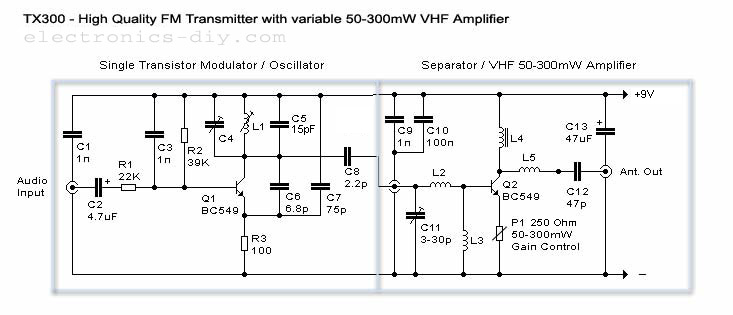
50-300mW FM Transmitter with TX300 Electronic Circuit Schematic Wiring Diagram.
The FM transmitter circuit is designed to operate within a power range of 50 to 300 milliwatts, making it suitable for various applications such as amateur radio broadcasting and low-power audio transmission. The core of the circuit utilizes the TX300 integrated circuit, which is specifically designed for FM transmission tasks.
The schematic typically includes essential components such as a power supply, audio input stage, modulation circuit, and an output stage for RF amplification. The power supply section is responsible for providing a stable voltage to the circuit, often derived from a battery or a regulated power source.
The audio input stage may consist of capacitive coupling to filter out DC components, allowing only the audio signal to pass through. This audio signal is then fed into the modulation circuit, where it is mixed with a carrier frequency generated by an oscillator circuit within the TX300. The modulation process alters the amplitude of the carrier wave based on the audio input, producing an FM signal.
Following modulation, the RF output stage amplifies the modulated signal to the desired power level, ensuring effective transmission over a specific range. Antenna matching components may also be included to optimize the output for the antenna, enhancing transmission efficiency.
Overall, this FM transmitter circuit is designed for simplicity and effectiveness, making it accessible for hobbyists and engineers looking to explore FM transmission technology.50-300mW FM Transmitter With TX300 Electronic Circuit Schematic Wiring Diagram. 🔗 External reference
The FM transmitter circuit is designed to operate within a power range of 50 to 300 milliwatts, making it suitable for various applications such as amateur radio broadcasting and low-power audio transmission. The core of the circuit utilizes the TX300 integrated circuit, which is specifically designed for FM transmission tasks.
The schematic typically includes essential components such as a power supply, audio input stage, modulation circuit, and an output stage for RF amplification. The power supply section is responsible for providing a stable voltage to the circuit, often derived from a battery or a regulated power source.
The audio input stage may consist of capacitive coupling to filter out DC components, allowing only the audio signal to pass through. This audio signal is then fed into the modulation circuit, where it is mixed with a carrier frequency generated by an oscillator circuit within the TX300. The modulation process alters the amplitude of the carrier wave based on the audio input, producing an FM signal.
Following modulation, the RF output stage amplifies the modulated signal to the desired power level, ensuring effective transmission over a specific range. Antenna matching components may also be included to optimize the output for the antenna, enhancing transmission efficiency.
Overall, this FM transmitter circuit is designed for simplicity and effectiveness, making it accessible for hobbyists and engineers looking to explore FM transmission technology.50-300mW FM Transmitter With TX300 Electronic Circuit Schematic Wiring Diagram. 🔗 External reference
